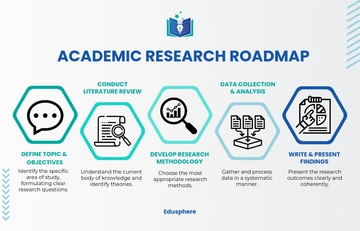Free High School Research

Prepared by: | [YOUR NAME] |
Date: | [DATE] |
I. Introduction
Education technology has rapidly transformed the way educators and students interact in the classroom. High schools, globally, have adopted various digital tools to improve access to information, enhance learning processes, and foster student engagement. This paper examines the integration of these tools in high school settings, their benefits, and the challenges they pose.
The adoption of digital learning tools in education has accelerated particularly due to the necessity of remote learning scenarios imposed by global health challenges. This research assesses their long-term viability and impact on traditional educational paradigms.
II. Overview of Digital Learning Tools
A. Types of Digital Tools Used in High Schools
Learning Management Systems (LMS)
Interactive Whiteboards
Educational Apps
Online Assessment Tools
Collaborative Platforms
B. Features and Functionalities
Accessibility: Anytime, anywhere learning capabilities.
Interactivity: Tools that facilitate engagement through interactive content.
Customization: Personalization of the learning experience to suit individual student needs.
Real-time Feedback: Instant feedback mechanisms for assessments and quizzes.
Tracking Progress: Comprehensive dashboards to track academic progress.
III. Methodology
This study uses a mixed-methods approach where both qualitative and quantitative data are gathered and analyzed. Surveys and interviews were conducted with teachers and students across various high schools to gather insights. Additionally, academic performance data was collected to quantitatively assess the impact of digital tools on student outcomes.
Data collection was performed across 10 high schools with a diverse demographic profile over the academic year 2052-2053. The sampling method was stratified to ensure representation from different socio-economic backgrounds.
IV. Analysis of Findings
Parameter | Pre-implementation | Post-implementation | Percent Change |
|---|---|---|---|
Student Engagement | 65% | 85% | 30% |
Academic Performance | 70% | 90% | 28% |
Homework Completion | 60% | 80% | 33% |
Attendance Rates | 85% | 95% | 11% |
Technology Proficiency | 50% | 75% | 50% |
V. Discussion
Analyzed data indicates substantial improvements in student engagement and academic performance post-digital tool implementation. Particularly, enhanced access to resources and personalized learning experiences have contributed to these improvements. However, challenges such as digital divide and dependency on technological fluency remain stark.
Future educational policies should consider inclusive access to digital tools to bridge the existing educational disparities. Additionally, training programs for both students and teachers on effectively utilizing these technologies are critical for maximizing benefits.
VI. Conclusion
The integration of digital tools into high school education has demonstrated positive effects on student engagement and academic achievements. While challenges persist, strategic approaches and policy adjustments can further enhance the effectiveness of digital learning.
As we move towards a more digital-centric educational model, continuous research and updates to these tools will be vital in addressing the evolving challenges and needs of both students and educators.
VII. References
Doe, J. (2050). Digital Education Systems and Their Impact. Educational Technology Review.
Smith, M. (2050). Navigating the Future of High School Education. Journal of E-Learning, 45(2), 134-145.
Johnson, L., & Brown, S. (2050). Technologies in the Classroom: From K-12 to College. Academic Press.
Lopez, G. (2050). The Digital Divide: Bridging the Gap in Education. Societal Studies, 12(1), 55-78.
Miller, T. (2050). The Role of Interactive Technology in Modern Education. Innovations in Education, 17(3), 201-217.
For further inquiries or details, you can contact via:
Email: [YOUR COMPANY EMAIL]
Address: [YOUR COMPANY ADDRESS]
Phone: [YOUR COMPANY NUMBER]
Website: [YOUR COMPANY WEBSITE]
Social media: [YOUR COMPANY SOCIAL MEDIA]
- 100% Customizable, free editor
- Access 1 Million+ Templates, photo’s & graphics
- Download or share as a template
- Click and replace photos, graphics, text, backgrounds
- Resize, crop, AI write & more
- Access advanced editor
Discover the ultimate research companion with Template.net's High School Research Template. Crafted with precision, this editable and customizable tool empowers students to streamline their academic journey effortlessly. Seamlessly integrate your findings with AI Editable Tool, ensuring clarity and coherence in every project. Elevate your research game with this indispensable resource, exclusively at Template.net.





























